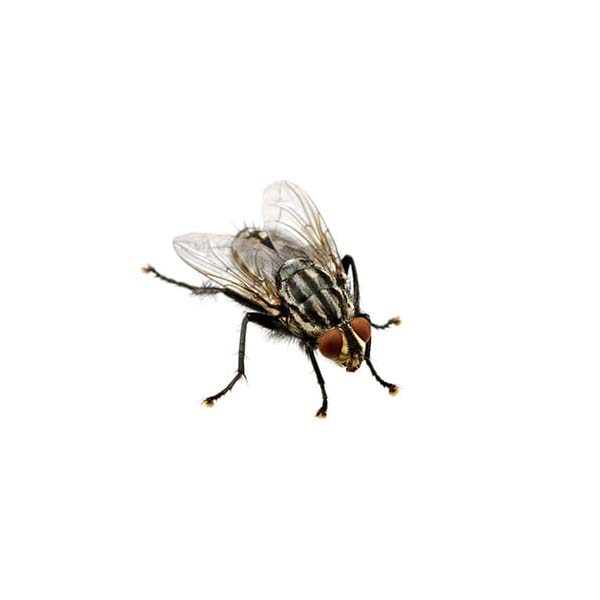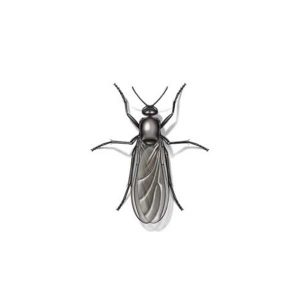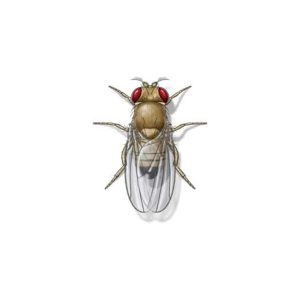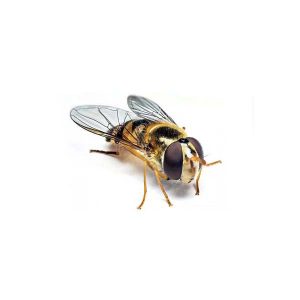Flesh Flies in Georgia
Flesh fly adults are a blueish gray, silvery grey, or sometimes black color. They usually have three black bands on the area directly behind the head (pronotum). This helps differentiate them from house flies, which typically have four bands instead of three. Flesh flies can also appear to have little pads on the bottom of their feet and they have a checkerboard pattern on their abdomen (back side of an insect). For some species, a black band on their head with gold stripes on either side can also help aid identification. The larva is a white or yellowish color and grow larger the more mature they are (these ‘levels’ of maturity are called instars). Pupa is not commonly found but are generally a tannish red or brown color. The larval stages (juveniles) feed on the feces, garbage, carrion, etc. on which they are laid. Pupae do not need to eat. Adults can eat a variety of different things, but their food sources are similar to those of the larvae. Their search for garbage, feces, carrion, etc. on which to lay their eggs can make them annoying for homeowners.
Flesh Fly Habitat
Flesh flies live in carrion, rubbish, rotting material, or feces as juveniles. They then crawl to the soil to burrow and become a pupa (resting stage between juvenile and adult flies); they later emerge as adults. Adults are commonly seen around trash cans, excrement piles, or dead animals, which is where they lay their larva. Adults will bathe in the sunlight on the sides of homes or other safe areas. A unique feature about flesh flies is that the adult female will carry her larva inside her and deposit a live larva (instead of an egg) directly onto a food source. The egg hatches in her abdomen and the larva remain there until she chooses to deposit them.
Flesh Fly Behaviors, Threats or Dangers
These insects are not pests in the way you might think. Since they live on rotting, decaying, or other filthy matter they can be an indicator that you might have a dead animal around, which would be a good thing to know! They are also very beneficial in forensic entomology to help determine the time of death (Post Mortem Interval). However, since they have such an affinity for nasty or unsanitary areas, they can mechanically vector a ton of viruses, bacteria, and other pathogens. Mechanically vectored diseases are spread by contact: a fly lands on poop, picks up bacteria on its body, lands on your food, bacteria is transferred to your food by the fly; mosquitoes transfer viruses, bacteria, etc. through a bite, which makes them chemical vectors. If you have concerns about flesh flies in your area, contact your local fly control experts.






